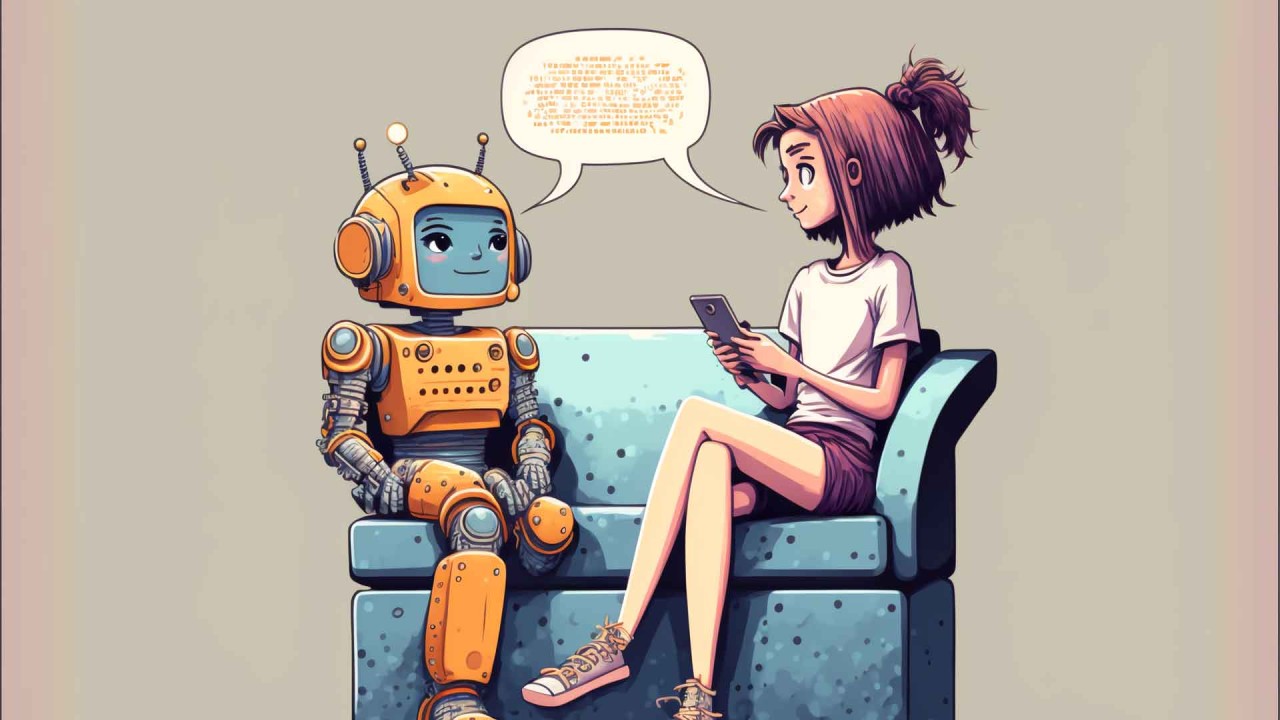.
ChatGPT – will it take over, or will we still need humans?
Who wasn’t worried by the news that Microsoft is so impressed with the latest artificial intelligence gizmo, ChatGPT, that it plans to invest billions in the technology in the coming years?
What is ChatGPT?
ChatGPT is a language AI that writes convincing emails, essays, blogs; you name it. Some experts have already said that it could become such a game-changer that it will push society towards mass unemployment.
In fact, several members of the comedy cabin team are already thinking of retraining to one of the professions that AI won’t be able to replicate. So, if you fancy a massage or a haircut, drop Steph W or Doug a line.
Will artificial intelligence win over humans?
With artificial intelligent applications poised to become embedded in every area of life, there is a concern that they could lead to mass social unrest. Anyone who’s seen the Terminator movies knows how this ends, right? Apocalypse. Humanoid robots stalking the post-nuclear wasteland that used to be Milton Keynes (hard to tell the difference, tbh), crushing human skulls underneath their evil metal toes.
I, too, had concerns. Would ChatGPT be funnier than I am? Surely not? I’ve got awards: Daily Echo Entertainment Award 2003, Best New Talent in Comedy North West; Surely, I can’t be replaced.
So, I set ChatGPT a challenge. Make me laugh, I ordered.
‘Why was the computer cold? Because it left its Windows open!’ was its reply. Hmmm, not bad, I asked again.
‘Why did the scarecrow win an award? Because he was outstanding in his field!’ Maybe my job is safe for now. I’ll give it one more chance.
‘Why don't scientists trust atoms? Because they make up everything!’
This, dear reader, is the best it could offer. It’s no Ricky Gervais, is it? It’s Christmas cracker-level. No nuance, not clever. An exclamation mark doesn’t make anything funny. It might get a chuckle.
AI can’t be creative or replace human collaboration
So, while ChatGPT can churn out emails, blogs and even songs in the style of Kylie in a matter of seconds, it is not funny, and it has two fundamental flaws that mean StephW and Doug are safe… for now.
It can’t be creative, and it can’t replace face-to-face collaboration. At best, it can provide a useful tool for basic tasks, freeing up its human overlords to be more creative and innovative. And this is important because while creativity used to be associated with artists in paint-spattered dungarees and people who did crafts as a hobby, it's now a mainstream workplace skill associated with innovation, problem-solving and productivity.
Indeed innovative organisations encourage creativity and provide frameworks within the workplace for creativity to flourish. Google, for example, reportedly allows its developers to spend 20 per cent of their time on their own creative projects. One wonders, ironically, how many of them are working on their creativity-crushing AI programmes during this time.
Why human creativity and innovation will win for now
There are many ways organisations can boost creativity, but to my mind, none of them includes AIs. From encouraging playfulness and curiosity to promoting experimentation and providing frameworks for idea sharing, humour fosters creativity, as evidenced in our Creative and Innovative Thinking Skills for Problem-Solving workshops. These are very human behaviours that are well beyond an algorithm's limits.
ChatGPT, for example, cannot ‘think’ beyond the confines of the dataset on which it was programmed. So its knowledge acquisition is ring-fenced and stopped in 2021.
Humans – 1. Robots – 0.
Another area where humans come out on top is face-to-face collaboration, largely because artificial intelligence doesn’t have a face. If it did, it would be a robot face with glowing red eyes or a holographic avatar like in the Abba show, but without the spangly costume.
Human face-to-face collaboration is also a key factor in creativity because it promotes relationship-building and the free exchange of ideas. This is why many organisations have been eager to encourage work-from-homers back into the office for at least part of the week.
However, while technology does enable communication and practically saved the world of work during lockdowns, remote work can also stymie collaboration and innovation, which often arise from spontaneous conversations in the office.
Contact solely through a screen also doesn’t work well for junior people or newbies either, many of whom started work during the pandemic and didn’t physically meet their peers for a year or more. An overreliance on remote working technology, such as Teams and Zoom, also makes it harder for people to engage with and buy into their workplace culture, hindering team cohesion.
So once again, while technology can help by providing a solution to a specific issue, it has limits.
Humans – 2. Robots - 0.
Technology will support humans to be more creative if used in the correct way
You may think I’m being unkind by not giving our semiconductor chip chums a chance. You may indeed think ChatGPT is the best thing since Metal Mickey. But there is no denying that when it comes to creativity, humans win every time.
Don’t just take my word for it. Here’s what ChatGPT had to say when asked to write something funny about creativity:
“Humans are truly a creative bunch. They can turn a simple piece of paper into a work of art, a plain old cup into a fancy latte, and even make a meme out of a cat wearing a banana costume. But let's not forget their greatest creation of all: the dad joke. It's a scientific fact that the dad joke is the most powerful form of humour known to man, capable of reducing even the toughest of individuals to a fit of uncontrollable laughter. So, let's raise a glass (or a cup of coffee) to human creativity, the force that brings us dad jokes, cat memes, and so much more!”
By ‘so much more’, I assume it means space travel, micro-surgery, the Large Hadron Collider, quantum computers and, er… artificial intelligence.
It's also evident by the language (use of ‘mankind’) that robots and tech are biased. This reflects the information added to it and is another reason technology can only go so far. To be creative, we must collaborate beyond our own worlds, seek new thinking to explore new possibilities, and be open to change and inclusion.
Now, where’s the off switch?
























